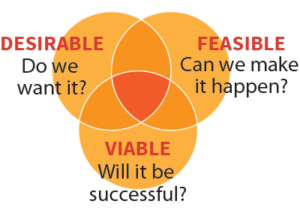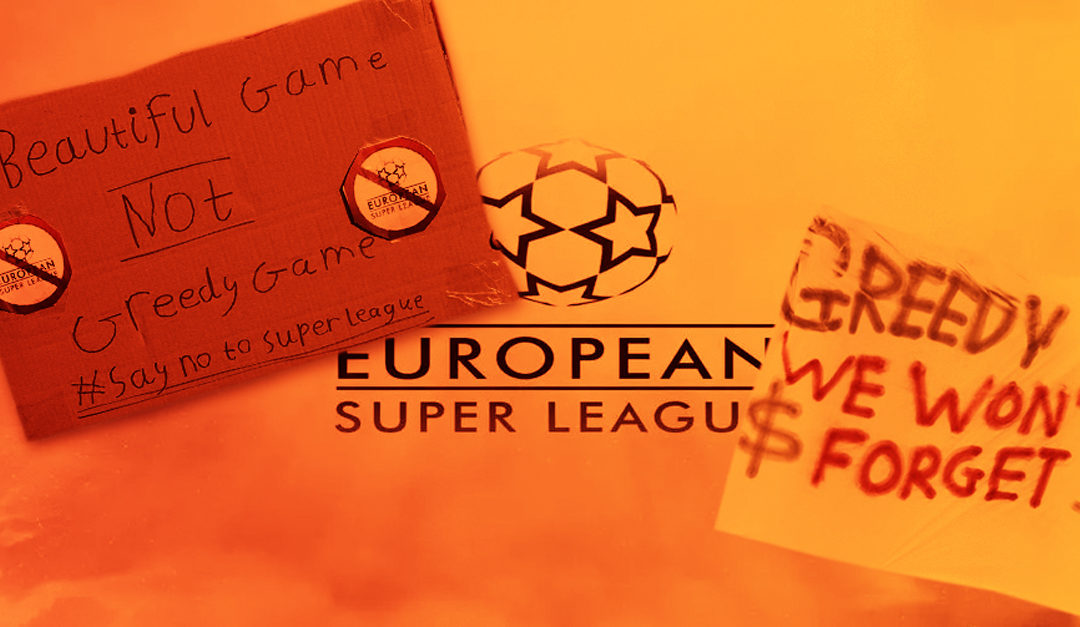My only real exposure to soccer came in the second grade, where I spent a brief period of time running around in the bee swarm that is a childrens’ soccer game. The majority of that season, however, was spent in in chicken pox isolation, so it was a bit odd to get a championship trophy for a team I didn’t participate much in. Ironically, it’s the only sports team of mine that I can recall having a winning record of any kind. I try not to read too much into that.
The fact that I refer to it as soccer instead of football and a game instead of a match should be indicative of my overall ignorance of the sport. I do enjoy the World Cup when it comes around, and despite my very basic understanding of the rules of the sport, I appreciate the energy, the athleticism, and the strategy of it all.
Last week when it was announced that twelve of Europe’s leading football clubs were joining together to create a Super League, I was a little baffled. Even in my limited understanding, I thought the Champions League already served this purpose. The press release accompanying the announcement positioned it this way:
The pandemic has shown that a strategic vision and a sustainable commercial approach are required to enhance value and support for the benefit of the entire European football pyramid. In recent months extensive dialogue has taken place with football stakeholders regarding the future format of European competitions. The Founding Clubs believe the solutions proposed following these talks do not solve fundamental issues, including the need to provide higher-quality matches and additional financial resources for the overall football pyramid. (thesuperleague.com)
The other odd part of it all was that the intent was not to replace the Champions League, but to add onto it.
Midweek fixtures with all participating clubs continuing to compete in their respective national leagues, preserving the traditional domestic match calendar which remains at the heart of the club game. (thesuperleague.com)
Considering All Stakeholders
The press release explicitly states that “extensive dialogue has taken place with football stakeholders”. Let’s consider some of these major stakeholders in the soccer ecosystem: club owners, players, fans, sponsors. It should be fairly simple to determine if stakeholder needs are being met by forming a super league. Are fans clamoring for it? Are the players excited about it? Are sponsors lining up to support it? In design thinking, the goal is to find the intersection between what is desirable, feasible, and viable. Do we want it, can we do it, and will it be successful?

This is where it is absolutely necessary to do a stakeholder analysis — the insight portion of the Innovation Ecosystem. Otherwise, the “we” can quickly turn into “me”, which is almost certain to result in failure. In this case, the owners considered themselves the only “we”. The owners wanted it. The owners could do it. They appear to have had “extensive dialogue” with themselves. What about the rest of the stakeholders?
Stakeholder One: The Fans
It’s not an overstatement to say that fan backlash to the proposed Super League was swift and harsh:
In a social media post, Spirit of Shankly (SOS) said: “FSG have ignored fans in their relentless and greedy pursuit of money. Football is ours, not theirs. Our football club is ours not theirs.” Chelsea Supporters’ Trust called the move “unforgivable” and said its members and “football supporters across the world have experienced the ultimate betrayal.
Additional reactions took aim at the greed of ownership:
“Tottenham Hotspur Supporters’ Trust said the ESL was a “concept driven by avarice and self-interest at the expense of the intrinsic values of the game we hold so dear”. (bbc.com)
Fans were so livid at the announcement that they took to the streets in protest. Clearly at least one important stakeholder group was not considered in the decision making process.
Stakeholder Two: Players and Managers
It gets worse. Response from the players and managers was equally severe:
Liverpool players, including captain Jordan Henderson, Trent Alexander-Arnold, Alisson Becker and Virgil Van Dijk all posted on Twitter: “We don’t like it and we don’t want it to happen. (theathletic.com)
To make matters worse, players and managers were suddenly seen as villains, though they had no part in the decision making. Liverpool manager Jurgen Klopp had this to say after the announcement:
“We were not involved in the process,” he said after the draw. “We are the team, we wear the shirts with pride. Somebody has made a decision with the owners in world football that we don’t know exactly why. We are here, we are the face of the club and arrived here and Leeds fans shouted at us as though we made the decision but we didn’t.” (theathletic.com)
Former Manchester United captain Gary Neville said he is “absolutely disgusted” by the plans.”It’s pure greed. They’re [the club’s owners] imposters.” (bbc.com)
Epic Failure
We have seen that two vital stakeholder groups were not considered in the development of the Super League. As expected, this resulted in epic failure. A mere two days after the Super League announcement, the clubs reversed course and backed out. Owners were left backpedaling amid the outrage.
Juventus chairman Andrea Agnelli, one of the founding members of the failed Super League project, told Reuters on Wednesday he “remained convinced of the beauty of that project, but admittedly … I mean, I don’t think that that project is now still up and running.” The Super League issued the following statement Tuesday night, promising to reconsider its plans to reshape the sport in Europe: (cbssports.com)
Takeaways
It’s easy to point the failure of the Super League as a testament to the power of fans and the authority they wield. There is truth to this, of course, but the larger lesson is that considering all stakeholders is imperative when attempting to innovate and make changes. More importantly, don’t just consider stakeholders, involve them. There is a big difference between telling people your plans versus collaboratively creating them together. Imagine if club owners had approached players and managers while making Super League plans. What if they had laid out their vision and rationale, asking for input and improvements along the way? Imagine if players and managers were excited about the Super League and saw it as the future of the sport. They would then have become ambassadors, bringing positive attention and excitement to the fan base. Imagine if owners had outlined the basic idea of the Super League to fans prior to colluding behind closed doors. Imagine if they sold it as an improvement on the structure of the sport, honoring tradition while ensuring the sustainability of its future.
Think of the biggest challenge you are facing. What problem are you trying to solve right now? In what ways are you trying to innovate? Now, are you truly involving all stakeholders or are you operating in a vacuum? Have you identified everyone that will be impacted by what comes next? Have you offered them a seat at the table to determine what success looks like for everyone involved?
Take a lesson from the Super League failure and avoid the myopic and elitist notion that you know what’s best for stakeholders without actually asking them. Instead, reap the benefits of true collaboration — trust, engagement, and solutions that meet the needs of all the people impacted.

